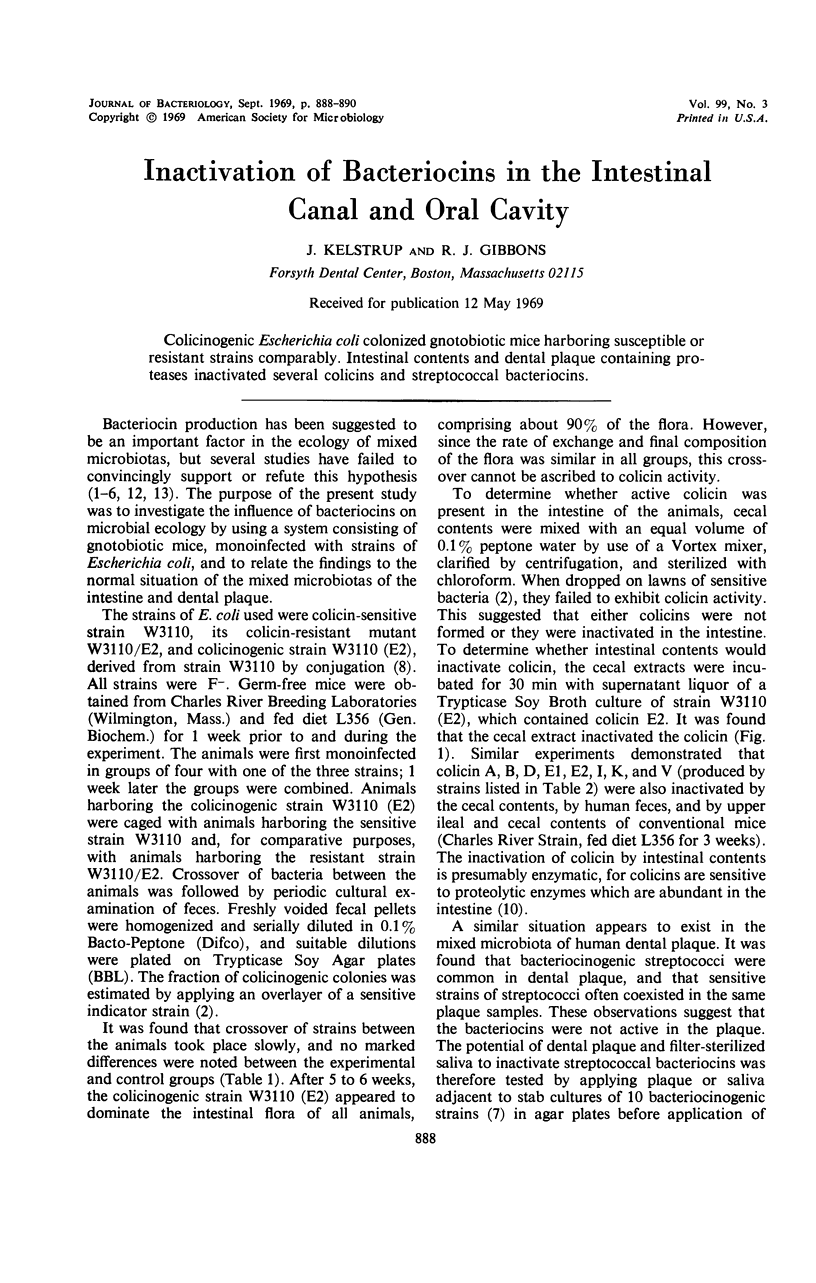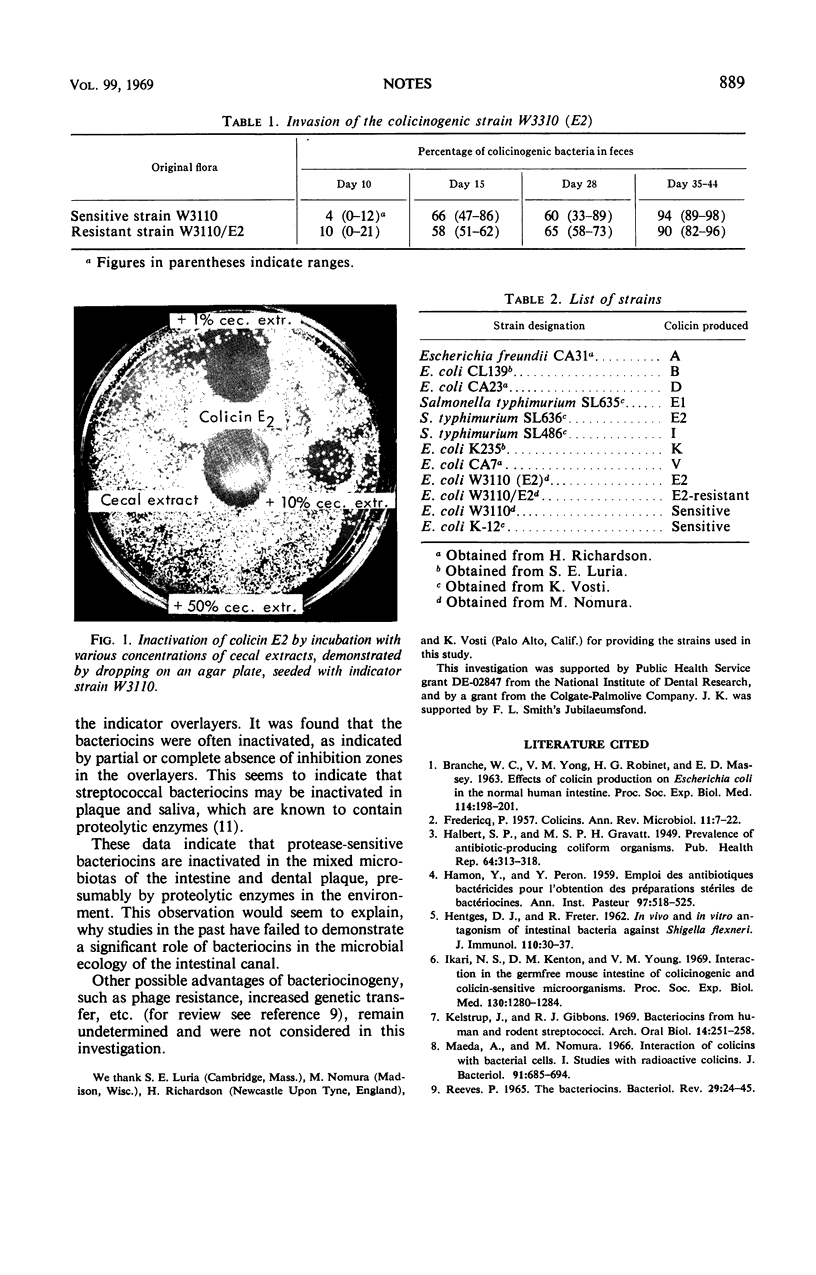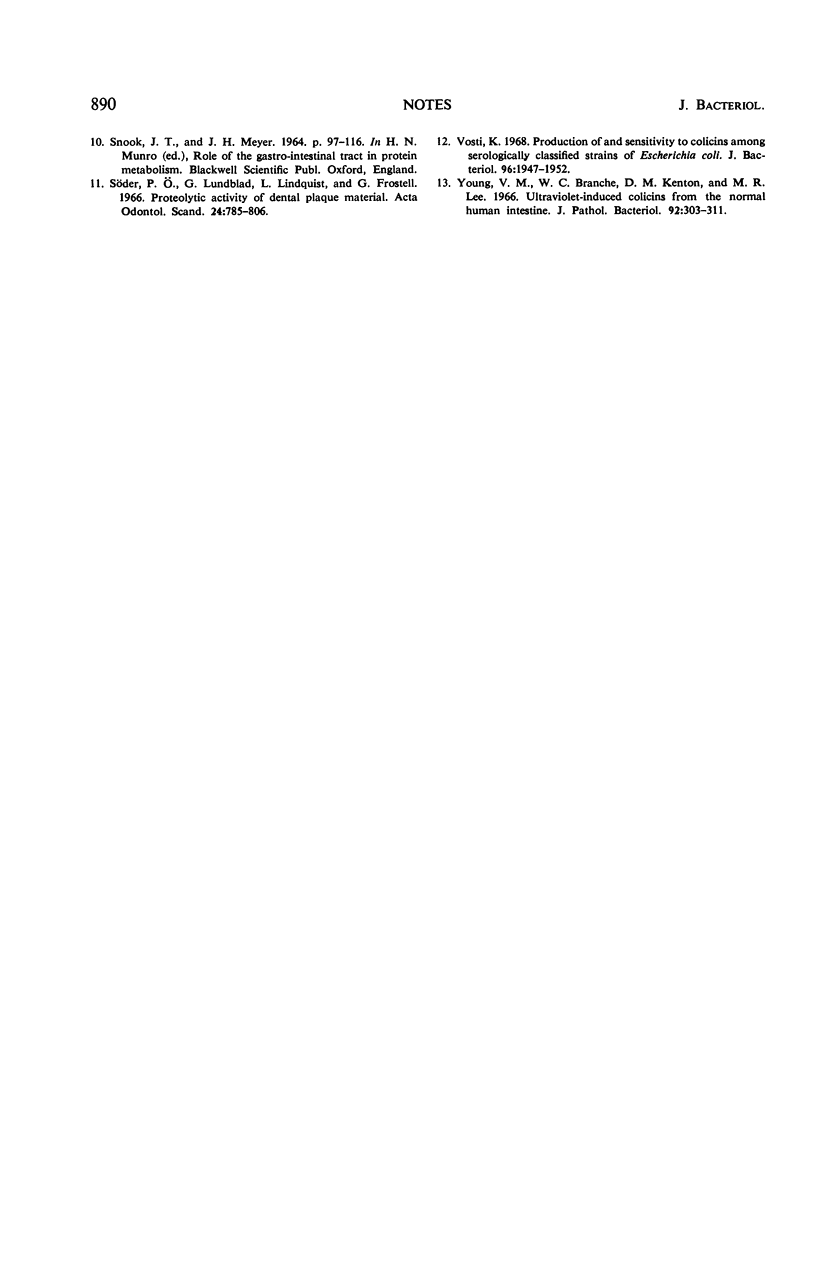Abstract
Colicinogenic Escherichia coli colonized gnotobiotic mice harboring susceptible or resistant strains comparably. Intestinal contents and dental plaque containing proteases inactivated several colicins and streptococcal bacteriocins.
Full text
PDF


Images in this article
Selected References
These references are in PubMed. This may not be the complete list of references from this article.
- BRANCHE W. C., Jr, YOUNG V. M., ROBINET H. G., MASSEY E. D. EFFECT OF COLICINE PRODUCTION ON ESCHERICHIA COLI IN THE NORMAL HUMAN INTESTINE. Proc Soc Exp Biol Med. 1963 Oct;114:198–201. doi: 10.3181/00379727-114-28624. [DOI] [PubMed] [Google Scholar]
- FREDERICQ P. Colicins. Annu Rev Microbiol. 1957;11:7–22. doi: 10.1146/annurev.mi.11.100157.000255. [DOI] [PubMed] [Google Scholar]
- HAMON Y., PERON Y. [Use of bactericidal antibiotics in obtaining sterile bacteriocin preparations]. Ann Inst Pasteur (Paris) 1959 Oct;97:518–525. [PubMed] [Google Scholar]
- HENTGES D. J., FRETER R. In vivo and in vitro antagonism of intestinal bacteria against Shigella flexneri. I. Correlation between various tests. J Infect Dis. 1962 Jan-Feb;110:30–37. doi: 10.1093/infdis/110.1.30. [DOI] [PubMed] [Google Scholar]
- Ikari N. S., Kenton D. M., Young V. M. Interaction in the germfree mouse intestine of colicinogenic and colicin-sensitive microorganisms. Proc Soc Exp Biol Med. 1969 Apr;130(4):1280–1284. doi: 10.3181/00379727-130-33773. [DOI] [PubMed] [Google Scholar]
- Kelstrup J., Gibbons R. J. Bacteriocins from human and rodent streptococci. Arch Oral Biol. 1969 Mar;14(3):251–258. doi: 10.1016/0003-9969(69)90227-1. [DOI] [PubMed] [Google Scholar]
- Maeda A., Nomura M. Interaction of colicins with bacterial cells. I. Studies with radioactive colicins. J Bacteriol. 1966 Feb;91(2):685–694. doi: 10.1128/jb.91.2.685-694.1966. [DOI] [PMC free article] [PubMed] [Google Scholar]
- REEVES P. THE BACTERIOCINS. Bacteriol Rev. 1965 Mar;29:24–45. doi: 10.1128/br.29.1.24-45.1965. [DOI] [PMC free article] [PubMed] [Google Scholar]
- Söder P. O., Lundblad G., Lindqvist L., Frostell G. Proteolytic activity of dental plaque material. VII. Separation of proteinases from dental plaque material with the aid of gel filtration through Sephadex and agarose columns. Acta Odontol Scand. 1966 Dec;24(6):785–806. doi: 10.3109/00016356609028741. [DOI] [PubMed] [Google Scholar]
- Vosti K. L. Production of and sensitivity to colicins among serologically classified strains of Escherichia coli. J Bacteriol. 1968 Dec;96(6):1947–1952. doi: 10.1128/jb.96.6.1947-1952.1968. [DOI] [PMC free article] [PubMed] [Google Scholar]
- Young V. M., Branche W. C., Jr, Kenton D. M., Lee M. R. Ultraviolet-induced colicines of Escherichia coli from the normal human intestine. J Pathol Bacteriol. 1966 Oct;92(2):303–311. doi: 10.1002/path.1700920206. [DOI] [PubMed] [Google Scholar]



